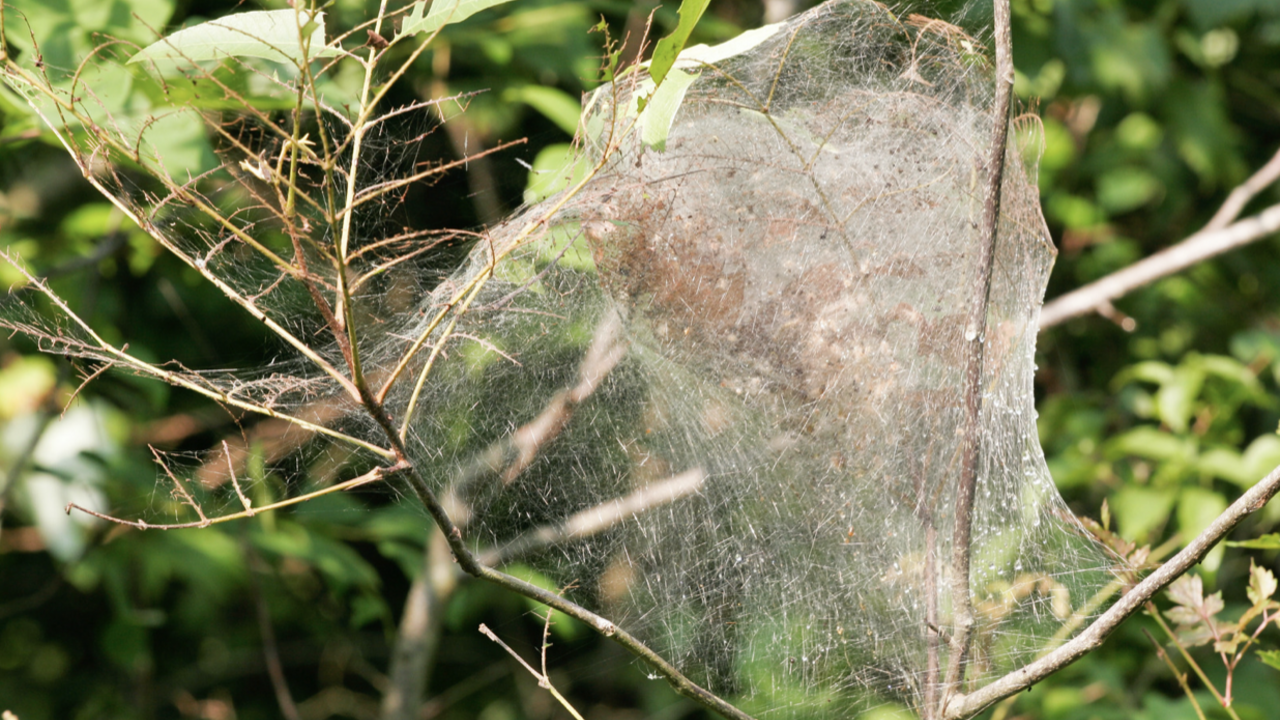Extension for Real Life
What are Fall Webworms?

Screen Shot 2021-09-10 at 7.23.53 AM.png
If you’ve noticed spiderwebs in your pecan trees, chances are they’re not spiders. They’re fall webworms.
Fall webworms are partial to pecan and persimmon trees but will also feed on other trees, including Bradford pears.
These small, hairy caterpillars occur in groups and spin their webs on the ends of tree branches. These webs protect them from insects, parasites and birds while they feed on the leaves.
Light infestations usually won’t cause a lot of damage and are nothing to fret about. If you have only a few webs in small- to medium-sized trees, you can leave them be or use a coat hanger taped to a long pole to destroy the web.
Heavy infestations, which are more common in the southern part of the state, can severely defoliate trees and cause reduced nut production on pecan trees for a few years. Complete defoliation usually will not kill an otherwise healthy tree the first time it happens.
Webworms can be managed with contact insecticide sprays. If you use sprays on pecan trees, read the label to be sure the product is safe to use on pecans because they are a food crop. Look for one of these active ingredients: permethrin, carbaryl, cyfluthrin, cyhalothrin, Bts, or spinosad. Some formulations of carbaryl and malathion are labeled for use on pecans.
Homeowners can treat small trees with a hand-held sprayer, but larger trees are more difficult to treat. Homeowners should consider hiring a licensed commercial applicator for larger trees. They have the equipment needed to reach safely into large trees.
Homeowners should also be aware that because treatments are applied in sprays, the products could drift onto other plants on your property or a neighbor’s property and cause damage.
Extension Publication 2369, “Insect Pests of Ornamental Plants in the Home Landscape,” provides more information about fall webworms and the best ways to control them.
For more information about choosing, purchasing, and applying insecticides, read Extension Publication 2331, “Control of Insect Pests In and Around the Home Lawn.”
To learn more about using pesticides in conjunction with other practices that help manage insect pests, including webworms, check out Extension Publication 2483, “Integrated Pest Management in the Home Landscape.”
Authors
-
 Extension Associate II
Extension Associate II- Agricultural Communications